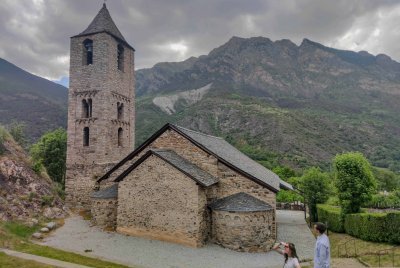
Though Hubert's review is over a decade old, it was the most recent one written before my May 2025 trip to Vall de Boi and I have to say, not much has changed. In fact, Hubert's review is quite comprehensive and I recommend giving it a read before reading my own here. I'll try and fill in any gaps.
Yes, this high concentration of churches were constructed by the Lords of Erill, though as the attendant at the one of the churches told us, it was not for religious piety that the lords constructed the buildings but rather to establish a particular small territory as their own during the constant conquerings and re-conquerings between the local leaders during that period.
In our visit to Vall de Boi, because it is so remote and takes so much effort to get to (we rented a car from Barcelona) there were very few other tourists, leading to the sense of peace and serenity that other reviewers have described. It's practically just you and the majestic mountains, deep in the heart of the Pyrenees. (Though Els' review makes me wonder if it used to be more popular.) We only saw one proper "tour group" in our time in the Valley, and they all arrived on a bus at the same time as we did to flood the seats of the "audiovisual" projection show in Sant Climent de Taüll. (Which, while not amazing, is still pretty neat and worth seeing.)
Eagle-eye …
Keep reading 0 comments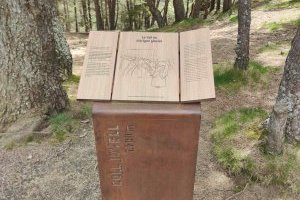
This is an area with some very beautiful hikes! I recommend a visit after seeing it in May 2025!
Now, whether this site is of "outstanding value to humanity", as many reviewers have commented, is debatable. As Els mentioned in her review over a decade ago, it's questionable the extent to which this site "reflects the persistence of pastoralism and a strong mountain culture, notably the survival of a communal land-ownership system dating back to the 13th century" as the inscription claims. The Madriu-Perafita-Claror Valley is located decently near Andorra's main highway that connects the whole country, and is close to the city of Encamp, which itself feels fairly like a mix of any generic Western European nation blended together with any outdoorsy city in the the modern American West. The amount of people doing intense outdoor biking and the number of trendy outdoor gear shops astonished me, but I didn't see anything that really reminded me of "pastoralism".
If you treat this as simply a nice hike with the added bonus of you getting to "check" a WHS (or a visit to Andorra, for that matter) off your list, then I think you will enjoy this. There are a whole host of trails, and the Valley's official website has a ton of different recommended routes (13 as of this writing) categorized by "Low", "Moderate", or "More" difficulty. If you are extra particular about trying to immerse yourself in the "core" zone of the WHS region …
Keep reading 0 comments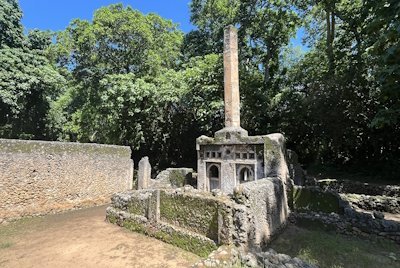
The Historic Town and Archaeological Site of Gedi gained World Heritage status last year – this is the first review since. Known as the Gedi Ruins, they are quite a popular tourist attraction, probably because of their convenient location, almost right at the main road between Mombasa and Malindi along the Kenyan coast. I arrived at Gedi junction by matatu, and jumped on the back of a motorbike for the final 1.5 km to the ruins. Like at all other sites nowadays in Kenya, there’s some commotion at the entrance since they will only allow online payments, which are hard to manage as a foreigner. So there are middlemen lingering about who, for a small commission, will buy a ticket for you via their phones. The entrance fee for foreigners is 500 KSh (3.5 EUR), I think it is still the non-WHS rate (there’s no plaque yet either).
I dodged the guides and went on my way alone. Signage is poor, but that doesn’t really matter: just remember that there is an inner zone where all the monumental buildings are and an outer zone with mostly forest and a wall here and there. Together, they form two rings. Beforehand, I had read the Tripadvisor reviews, which almost without exception rave about guides feeding the resident Sykes’ monkeys bananas – fortunately, this practice seems to have been halted, there are “Do not feed the animals” signs and I only saw a few monkeys from afar.
The history of …
Keep reading 0 comments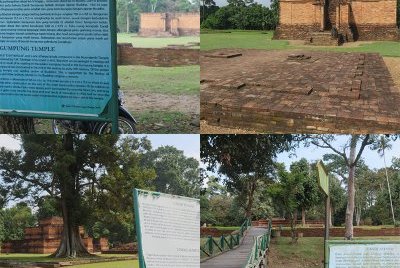
I went to see the temples at Jambi, appropriately called Muarajambi, in March 2018. By appropriate I obviously mean that the town has been named AFTER the temples that are nearby. There isn't much next to the town anyway. The town of Jambi isn't great either and I had people walk into the room late, quite sure it was a dodgy place and next door didn't look much better. You can fly in easily but the hotels are mediocre, hopefully things have changed though. The townfolk aren't used to seeing foreigners either. I eventually made friends with the hotel reception NEXT DOOR and the two girls asked their friends to drive us there by motorbike. You can probably easily find a ride especially with Grab or whatever, but back then it wasn't easy. The bike also took me to the airport later.
So as for the temple area - it doesn't take long to visit. The official description mentions 8 excavated temples but in reality half are still just knee-high floor plans. There are temples in grander "Siem Riep" style height but one isn't supposed to visit them. You can walk round them and visit from outside and that's about it. There isn't any decoration which wasn't meant to be at the time anyway so you are looking at red brick kingdom. At the time of visit there was no guard, no ticket office, just some signs to read about them. I spend more time chatting with the girls …
Keep reading 0 comments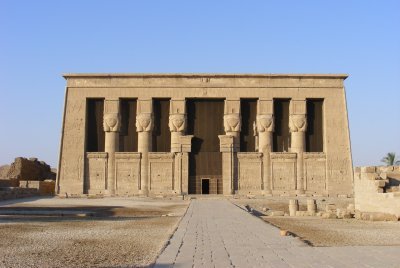
The four Pharaonic temples of Dendera, Esna, Edfu and Kom Ombo make up the tentative nomination and I have been fortunate enough to visit Dendera and Kom Ombo.I enjoyed The Temple of Hathor in Dendera (pictured) a lot, it is a very complete temple on account of its relatively young age of between 305 and 30 BEC, in fact it is one of the best preserved temple complexes in the whole of Egypt. The processional stairway leading to the roof of the temple is particularly impressive.The Temple of Kom Ombo, by contrast is more akin to the ruins found in Luxor and Philae. Although the building is newer in comparison with Dendera, 180-47 BEC, it has suffered damage caused by earthquakes, the river Nile and people taking the stones for their own building projects. It is a rare double temple, two temples, identical but dedicated to different Gods.What I found surprising at both Dendera and Kom Ombo, was that these hugely impressive temples were completely devoid of tourists except for me and my daughter.Both locations are at least an hour's drive from the major tourist hub of Luxor, Dendera to the north and Kom Ombo to the south just after half way between Luxor and Aswan which may account for the lack of visitors. The Nile cruises probably stop here but not on the days I was there.Egypt has such a wealth of ancient sites I guess it's easy to overlook some of them but I found them both well …
Keep reading 0 comments
Every winter, gray whales enter the bays on the Pacific side of the Baja peninsula to breed and rear young. The warm water is high saline and shallow enough that an adult whale can often touch bottom with their tails with their heads above the surface. Like giant hot tubs, these blue lagoons are perfect for adult whales to meet up and mate. Like a kiddie pool, these nurseries are perfect for babies to practice holding their breath, to open their eyes underwater and to learn to swim. And like top rated world heritage sites, these bays—named after a Spanish explorer—are perfect for tourists to experience the best whale watching in the world, with a sizable concentration of gray whales including babies, accessible from nearby beaches in small boats, with up close encounters, even touching.
The northeast Pacific population of gray whales has been decreasing in recent years, but there are still hundreds counted here every winter. I visited in February, choosing the Ojo de Liebre (hare’s eye) lagoon. I drove from California and booked my own hotel for 2 nights, but most whale watchers book package tours including hotel accommodation in Guerrero Negro. Some stay in seasonal camps on the beach for days and go out on the water multiple times. I went out once and fortunately it was a good day with the whales.
Within 30 minutes, we boarded our small boat, motored out into the lagoon found some friendly whales and let them come up …
Keep reading 0 comments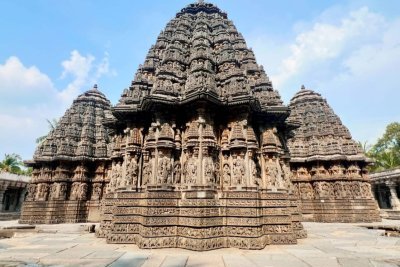
A business trip in Bengaluru not only took me back to India but also a perfect chance to visit one more World Heritage Site, the Sacred Ensembles of the Hoysalas. Originally, I thought I should have free days during weekend, so I already arranged two days tour to visit all three temples that are the component of this UNESCO site, but the business meeting continued to Saturday forced me to change my plan to visit only one temple, the Chennakeshava Temple at Somanathapura which is considered the zenith of Hoysala architecture. It took almost 3.5 hours from Bengaluru’s downtown to reach the small village of Somanathapura. My driver immediately took my colleagues, who were last minute decided to join this tour, and me to the ticket booth to secure digital ticket and requested us to take off our shoes at the temple entrance. I tried to keep my shoes inside my backpack for safety, but the driver insisted that no shoe even inside backpack is allow inside the complex. Then we met a guide who helped us to understand what Hoysala art is.
The most unique characteristic of this temple is the star shaped layout which reminded me the Church of St. John of Nepomuk at Zelena Hora in Czechia, but this one in India is far more complex with 3 star-shaped temples connecting with each other forming a beautiful and impressive building. We entered the temple hall to see the ceiling which is depicting mango leaves and banana …
Keep reading 0 comments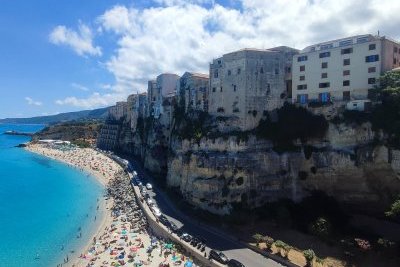
Tropea is the ideal tourist town in southern Italy. Crumbling, rustic charm built on a cliff overlooking a sandy beach and the clear blue waters of the Mediterranean sea.
As you would expect, there are bars, restaurants and shops catering for the tourist trade and the town itself is very photogenic, if a little small.
The surprising thing for me was that the town, as pretty as it is, was ever considered for a UNESCO listing at all. There are very few sights of cultural significance, the Wikipedia entry doesn't list any, in fact.
In 2021, Tropea was voted, most beautiful village in Italy, which also surprised me. As I mentioned, it is charming and rustic in the way only Italian places can be, but put it on the Italian Riviera and you would probably give it a miss.
Keep reading 0 comments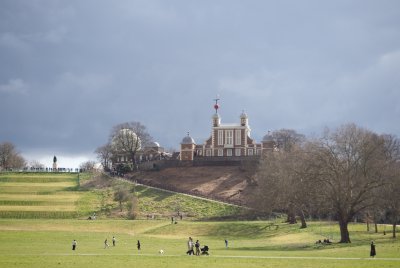
It's a fool's errand to try and see everything Greenwich has in one day, so naturally I had to give it a shot. I got there via the Thames Clipper River Bus, which has the added bonus of seeing bridges like Blackfriars and Tower Bridge from low down, and grabbed a coffee from the Starbucks which is surprisingly well-integrated into the street's aesthetic for a morning dander around the Naval College grounds until things began to open (it's worth getting there before attractions start opening at 10am to appreciate the exteriors at your leisure.) The first destination was the Chapel of St Peter and St Paul, which has lovely blue highlighting against the more standard cream-coloured walls. There's a Choral Evensong there after everything has closed that could be worth visiting but, alas, my flight was that night so I couldn't see it for myself. After that I went to the Painted Hall. They have quiet hours on Fridays which allowed me to enter at 10:15am, an essential piece in getting this schedule to work. I admittedly didn't click with it quite as much as other people, probably because of how hagiographic it is. King Billy aside, there are still plenty of highlights there, for myself the inclusion of Wren's own blueprints, the four women along the edges of the Upper Hall's ceiling who each represent a different continent (including a fascinating pseudo-depiction of a Native American), and the archway with golden representations of the North Hemisphere's six …
Keep reading 0 comments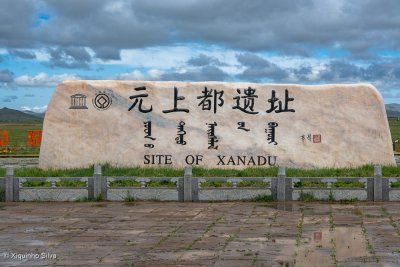
The Site of Xanadu is a remarkable testament to the Mongol Empire’s grandeur, where nomadic traditions met Chinese urban planning. I was struck by the vastness of the site, with its city walls, palace foundations, and temple remnants set against the extensive grasslands.
The site’s layout, with its outer city, inner city, and palace area, reflects the ingenuity of Liu Bingzhong’s design, blending yurt-style architecture with permanent structures. Though much of the city has succumbed to time, the visible earthworks, moats, and scattered relics evoke the opulence once described by Marco Polo.
Reaching Xanadu requires some planning due to its remote location and lack of direct public transport to the site. To avoid taking an expensive flight from Beijing to Xilinhot, I began my journey at Beijing North Railway Station, a major hub for trains heading north and took a high-speed train to Ulanqab Railway Station (Wulanchabu), which is approximately 300 km from Beijing.
Upon arriving at Ulanqab Railway Station, I found the nearby bus terminal to catch the K1 bus to Jining South Railway Station. Here, I boarded a train to Sanggendalai Railway Station, the closest passenger station to the Site of Xanadu.
From Sanggendalai Railway Station, I took a shared taxi to Zhenglan Banner (Zhenglanqi), about 50 km southeast. Shared taxis are common here, often waiting outside the station, and cost around CNY 50 per person, depending on the number of passengers, the ride takes about 1 hour. The final leg involved taking a …
Keep reading 0 comments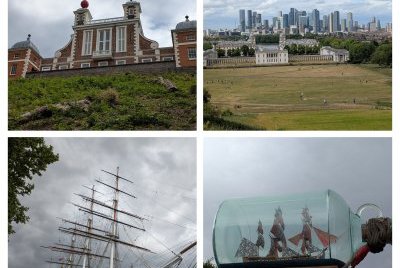
I was surprised to see so many people at Greenwich as I thought it was only going to be a few hardy science enthusiasts coming to visit the observatory. But, as we learned, there is so much more and visiting makes for a pleasant day out from central London. We took the Uber Boats down the Thames to Greenwich. The rain dried up for a bit, the green park was nice for walking through, and we happily found much more than the Royal Observatory there. At the observatory, we took the obligatory "two hemispheres" photo, but didn't enter the observatory proper due to the steep admission fee given our time constraints. Still it was nice to see such a historic place. We did enter the (free) National Maritime Museum which now features a giant ship-in-a-bottle model of Nelson's HMS Victory at its entrance. We found the museum very interesting and we admired the intricate ship models, learned a little history, and sat in on a nice lecture about Peter the Great's visit. We also walked through the old Naval College's Chapel of St. Peter and St. Paul and were tempted by the Painted Hall, but again, the high admission price put us off when we were planning to see a lot of other art at the National Gallery. The Cutty Sark, as an icon of Maritime Greenwich was also nice to see. After our visit, the long line to get back into an Uber Boat had us rethinking taking the …
Keep reading 0 comments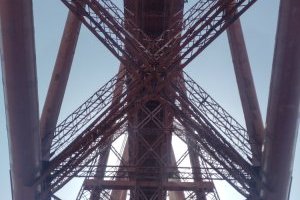
I was in Edinburgh for the first weekend of this April, and with the Sunday free decided to take the short trip out to visit the Forth Bridge. A cooperative effort between local government groups runs a circular walk, the Forth Bridges Trail, between Dalmeny and North Queensferry stations (on either side of the bridge), so I took the train from Edinburgh Waverley to Dalmeny and followed the trail, taking from about 9.30 in the morning to 1.30 in the afternoon (longer than I expected, but then I did dawdle).
Apart from a slight hiccup finding the start of the trail, it's mostly well-signposted throughout, with an online map and closer-scale maps at each point. The weather was warm and sunny almost the whole way, showing off the Firth of Forth gloriously (it is a beautiful body of water), and South Queensferry (the settlement south of the Firth, where Dalmeny station is) in particular is a sweet village, which I greatly enjoyed wandering through and reading the information boards. They mostly relate to the history and construction of the Forth Bridge - the trail includes a memorial to those who died during its construction - with a little entertaining local colour thrown in, and some detail on the other bridges across the Firth (the 20th century Forth Road Bridge and the 21st century Queensferry Crossing - obviously outside of the remit of the WHS). There are plenty of views of the Bridge from various angles along the way, and …
Keep reading 0 comments
September 2016
It was o-dark-thirty! The boat left the dock at dawn. A cup of some Kona coffee kept me awake. From a distance, I saw the fiery landscape as the lava flowed into the sea. Jack Johnson was playing over the loudspeaker, and made me want some banana pancakes! Sitting, waiting, wishing! Bubbly toes! The heat rose as the boat inched closer. The waves crashed into the cliffs, rocking the boat from side to side. Hot air bubbles collided with the boat from below. It was an amazing experience!
I first visited Hawaii Volcanoes in November 2013. I landed in Kona and drove the long way along the coast and stopped at the Kīlauea Visitor Center on my way to Hilo. There was no visible lava at the time. I saw steam vents, did a lava tube tour, and saw the glow coming from Hale Ma'uma'u Volcano Crater. Otherwise, it wasn't very memorable.
I kept an eye on the lava flow forecast. Living in San Jose, it was just a puddle jump to the Big Island (well, a 5-hour flight). When I had an opportunity to see a lava flow in 2016, I went for it. I booked a tour with Lava Ocean Tours. At that time, it was one of a few operators with a permit to navigate close to the lava flow. The company offers a lava sightseeing boat tour throughout the day, but the dawn tour provides the most beautiful views of the …
Keep reading 0 comments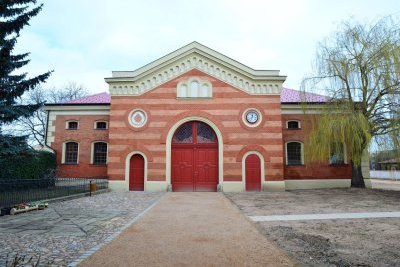
I'm not a horse lover, but Kladruby is interesting. I recommend climbing the lookout tower and looking at the landscape. It's flat, so you can see quite far. I took the carriage tours and it was interesting. I skipped the castle and stable tours - I'm guessing standard. Everything is repaired and nice from the outside. Otherwise, Kladruby was part of a cycling trip, which is probably the best way to get to know the local landscape. I understand that it's a problem for foreign visitors to get a bike. I don't know how many horses they keep in Kladruby, but it was really nice to see the horses grazing freely in the meadows. We were also lucky to see herds with foals. It's interesting to see adult white horses and black or brown foals. Foals only become white when they are adults (around 7 years old).
Keep reading 0 comments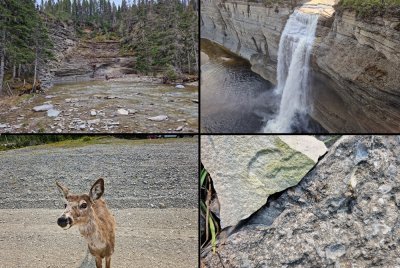
During my visit to Newfoundland and Labrador, I really wanted to see Anticosti, and it turns out that the island can be perfectly incorporated into a trip to this province. WHS fans must take a ferry to Labrador to see Red Bay and they usually spend a night in Blanc Sablon or the surrounding area. From Blanc Sablon, a small Air Liaison plane flies to Sept-Iles and then to Port Menier, the only settlement on Anticosti. Next day is a flight back, so you basically have 24 hours on the island. A ticket purchased in advance is not very expensive (it cost me 400 CAD round trip), and the trip itself is an adventure. The plane from Blanc Sablon to Sept-Iles stops at four other airports along the way – St-Augustin, Chevery, La Romaine and Natashquan. These places on the southern coast of Labrador (though belonging to Quebec) have no road connection to the world (apart from the last one), and can only be reached by sea or air. I flew a small Beechcraft-19 plane with no boarding passes or airport security checks! I've flown many times in my life, but never like this. Unfortunately, the airline is not known for its punctuality - both flights were delayed by 7 hours! By the way - remember that flight times are in Quebec time zone, 1h 30 m difference with New Foundland time zone.
Anticosti is a large (from the eastern to the western tip it is about 300 kilometers) …
Keep reading 0 comments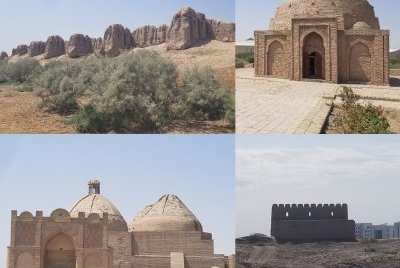
I went to five locations of this serial nomination, perhaps even six without knowing. They are covering the entire country and if you go SOMEWHERE you can just ask for an extra one to cover this. I am not sure all would be included in the final listing because some are just forgotten realms.
My first, and probably the easiest to cover, is Anau. The mosque here has been ruined by an earthquake and it would probably would look good. I saw the original in the museum and there is a famous story about dragons - something I won't get into before you know it yourself - and this is definitely a highlight. It's even better if you actually got the background in the museum first because frankly seeing the remains are a bit sad. As it's just at the outer edges of Ashgabat with facilities and restaurant this is a good stopover.
Second stop was Abiverd. Because I requested this we didn't take the new highway to Turkmenabad. The stopover wasn't long - in fact nobody was else was interested to check it out. The walls are low and rained off - in fact I think this would disappear in a few decades without any care and maintenance. I walked through this for 10 minutes but after you see one corner of the site the rest is all the same. Definitely NOT a highlight but not the worse of the bunch! I don't have a picture of …
Keep reading 0 comments
We weren't able to hike very far up Le Morne when we visited because it had been raining and we were told that hiking it when it was so muddy was not advised. So we contented ourselves with just walking up the flanks of it a little ways, and driving around it to admire the views.
We also saw the Slave Monument, though the gate was closed when we were there.
OK, it's a nice small mountain, nice to look at, with a pretty view and some slave history. Otherwise, it isn't so remarkable and I don't really see much OUV.
Keep reading 0 comments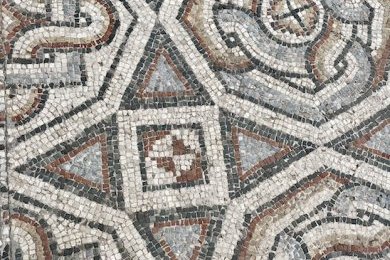
Sardis was a great change of pace from the tourist-filled Ephesus and Pamukkale. The gymnasium alone is very impressive, and has a somewhat different visual weight to it from the other ancient sites in the region -- more red brick than white marble, for instance -- and it's much less crowded. The synagogue is the largest known synagogue from the ancient world. The mosaics throughout the WHS are also nice. A pet peeve of mine is ruins without any signage, but Sardis doesn't disappoint in this matter either; there is plenty of signage in Turkish & English to explain what you are seeing with out it being overbearing.
In terms of the negatives, the "museum" on site is very small and had actual spiderwebs across it when I attempted to enter. Some of the artifacts and mosaics are replicas, with the originals being hosted in various museums. Bintepe, the other component, can't really be entered but you can see it from the highway when you are driving to Izmir (at least I think I saw it!). The only part of Sardis I didn't see was the Temple of Artemis. As the former capital of the Lydian Empire, it was an interesting sight to see, and I would recommend to travelers already in the area :)
Keep reading 0 comments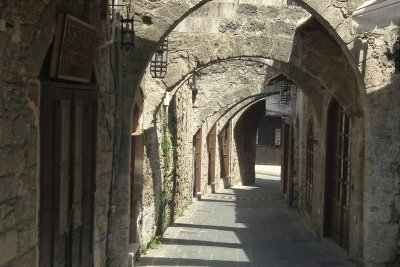
When Greece opened up for package holidays, the first two major islands to be developed for mass tourism were Corfu and Rhodes, and having been to both (more than once) it's easy to see why.The island of Rhodes itself is a worthwhile destination with plenty of activities and sights to see but the jewel in the crown is definitely Rhodes town in my opinion.The medieval walled town with it's own Crusader castle is a charming maze of cobbled streets and beautiful stone built shops, restaurants and houses. You can walk down one of the busy cobbled alleyways bustling with holiday makers, with cafes and shops catering for the tourist trade, turn a corner into an alleyway of residential houses and admire the locals having a makeshift barbeque outside, men and women deep in conversation and the children playing in the traffic free street.Going slightly out of season shows Rhodes in it's true light, a laid back pace of life and locals happy to engage with the travellers who made the choice to come.The harbour area is as magical as the town as you try to visualise the Colossus of Rhodes (one of the seven wonders of the ancient world) that once towered over the harbour entrance replaced today by statues of deer atop Greek columns, also impressive in their own way.At the height of the season Rhodes is full of package holiday guests and cruise ship passengers but the town seems to absorb them effortlessly.We often bemoan mass tourism for …
Keep reading 0 comments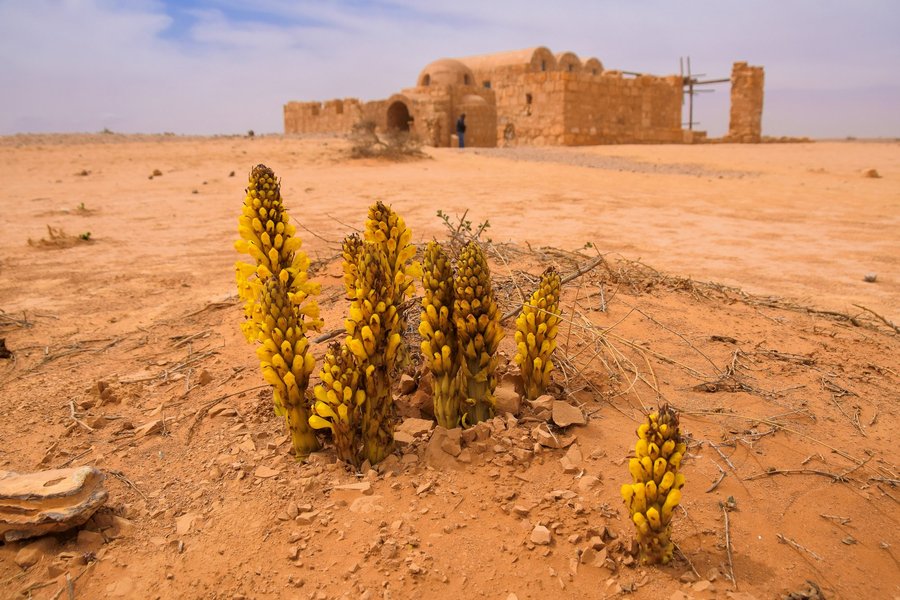
As there are already a number of excellent reviews of Quseir Amra, I will focus more on my day trip itinerary to Zarqa Governorate and the eastern portion of Amman Governorate. After all, there is very little practical sense to visiting Quseir Amra only. I visited Jordan in March 2024, and I travelled to the Desert Castles and Azraq Wetland Reserve using a rental car. I will describe my day trip in the order of my travel.
Qasr Kharana (or Qasr Al-Kharanah or Qasr Al-Harrana)
The drive to Qasr Kharana is simple. You just get on the paved Highway 40 until you see Qasr Kharana. It is nearly impossible to get lost once you are on Highway 40, and the Qasr is as nearly impossible to miss. Qasr Kharana - built before 710 CE - is essentially a rectangular box, but the building becomes more interesting once you step inside. The ground floor reveals a central courtyard surrounded by a group of barrel vaulted rooms. You can take the stairs to the upper floor, which contains rooms decorated with pilasters and niches.
Qasr Kharana is an evocative ruin, which can be explored in a half an hour or less. It would be a mistake to skip this interesting site on one's way to Quseir Amra.
Quseir Amra
Hopping back on Highway 40, I reached Quseir Amra (photo) in 10 minutes. I also crossed the boundary between Amman Governorate to Zarqa Governorate, not that there was an obvious transition.
There is …
Keep reading 0 comments